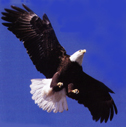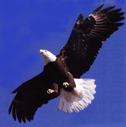|
The Soviet Franz Josef Land Overflight by Page 1 of 2 Pages |
|||||
 |
 |
||||
|
The Overflight Events
On 8 September 1952, we received verbal orders from SAC Hqs. to execute the mission on 9 September. The weather forecasters determined that now was the time to launch. We planned the overflight so that the sun, reaching the islands, would be providing us the best light for photography. This timing dictated our takeoff in the predawn darkness. I filed a “round robin” flight plan with base operations for a flight time of 15 hours. Our alternate, in the event Thule was socked in on our return, was the air base at Sondrestrom Fjord, (Blue west eight), some 750 miles south of Thule. With the crew in place, we started engines, received the light signal from the tower for taxi clearance, and moved into the #1 position at the head of the runway. While performing our takeoff check list and engine runup, the flight engineer, TSgt. Goolsbee, informed me that we had a problem. There was no control over the #2 engine propeller RPM. Goolsbee on investigation, observed electrical arcing near the propeller governor junction box. So that was it for this day. We taxied back to the ramp, shut everything down and went to work. I closed out our flight clearance and advised SAC of our abort and the reason for it. With the aircraft in the hangar, work proceeded to repair the electrical malfunction encountered with the #2 propeller operation. When this work was completed, the aircraft was towed out, the engine run-up and the propeller operation checked. During the engine run-up a fuel leak was discovered in a right wing fuel cell. The tank was de-fueled, repaired with much difficulty and refueled. At the same time, we topped off the remaining fuel tanks. The dramatic change in temperature and humidity between Puerto Rico and Thule was evidently creating some problems. On 10 September I advised SAC that our aircraft was in commission and that we were on standby mode awaiting orders to execute the mission. This wait period provided additional time to review and recheck all the aircraft systems. I was determined that there would not be another last minute abort. Airborne to Franz Josef Land On 16 September orders were received directing the execution of the mission. Takeoff was established for the early morning hours of 17 September. The night of the 16th and the morning of the 17th was one of those days you do not like and don't want to think about. The base was enveloped in dense ice fog. The darkness along with poor visibility made going to the mess hall and on to the hangar a navigational exercise for all of us. I again filed a round robin flight plan, as before, with the estimated time of 15 hours. Visibility was 1/8th of a mile or less. Radio communication and light signals from the tower were not an option. Fortunately there was no indication of inbound traffic to hinder our takeoff. As before our preflight inspection and checkout was completed (this took several hours to get everything warmed up) and we were ready to start engines. After starting engines and ready to taxi, the fog became so thick that I could not readily discern the taxi strip leading to the runway. Landing lights were of no use, the ice fog was such that the light would reflect back to us as if a shade had been pulled down. Our RB-50 aircraft had retractable landing lights recessed underneath each wing. They could be turned on in either extended or retracted position. With the lights on and retracted, so that a follow-me vehicle could see us in the fog, we were slowly led onto the 140 foot-wide runway. We lined up on the centerline, and the follow-me vehicle departed. (Our wing span was 141 feet). Despite the fact that the runway lights were at high intensity, I could only discern one runway light right off my wing tip on either side of the runway. As we were fairly heavy, considerably above Max normal takeoff weight, I expected that our ground roll would be about 5,800 feet. The crew was ready. As I contemplated the instrument takeoff, timing to the target area was critical. This would be our last chance — there would be no abort. I completed my takeoff check list, re-checked all of my instruments and set the directional gyro compass to the runway heading. With the engineer's runup check completed, Goolsbee said that he was ready. I advanced the throttles, released the brakes, continued up with the power and our takeoff roll began down a dark and foggy runway. I recall, during the roll, that I was hoping that the runway heading I had set into my gyro compass was correct. After starting our roll, we never saw another runway light. As the roll progressed with the airspeed slowly increasing, I was anxious to get air-borne. It was a real relief to me when we reached takeoff speed, lifted off, with the rate of climb and the altimeter increasing, and I could call for “gear-up”. (I will never forget the feeling I had when we lifted off and I could call for gear-up.) I had no idea where we were in relation to the runway when we lifted off. In reflecting back, we had to be on the runway because our roll, up until lift-off, was smooth. Now we were on our way to our rendezvous with Franz Josef Land Archipelago. End Page 1 of 2 Pages of Chapter 4 — Go to Page 2 You may go to Cover Page — Editor's Introduction & Prologue — Table of Contents Chapters — 1 — 2 — 3 — 4 — 5 — 6 — 7 Or, you may Home - Contact Us - Cold War Hist. - 91st SRS Hist. - Stardust 40 Mission Story |
|||||